Top Rankings
Learn School District ranks among the top 20% of public school district in Connecticut for:
Category
Attribute
Graduation Rate
Highest graduation rate (Top 20%)
Diversity
Most diverse schools (Top 1%)
For the 2025 school year, there is 1 public elementary school serving 495 students in Learn School District. This district's average elementary testing ranking is 3/10, which is in the bottom 50% of public elementary schools in Connecticut.
Public Elementary School in Learn School District have an average math proficiency score of 33% (versus the Connecticut public elementary school average of 41%), and reading proficiency score of 41% (versus the 50% statewide average).
Minority enrollment is 79% of the student body (majority Hispanic), which is more than the Connecticut public elementary school average of 55% (majority Hispanic).
Overview
This School District
This State (CT)
# Schools
4 Schools
774 Schools
# Students
1,306 Students
328,044 Students
# Teachers
97 Teachers
27,032 Teachers
Student : Teacher Ratio
13:1
13:1
District Rank
Learn School District, which is ranked within the bottom 50% of all 197 school districts in Connecticut (based off of combined math and reading proficiency testing data) for the 2021-2022 school year.
The school district's graduation rate of 95% has increased from 90-94% over five school years.
Overall District Rank
#132 out of 200 school districts
(Bottom 50%)
(Bottom 50%)
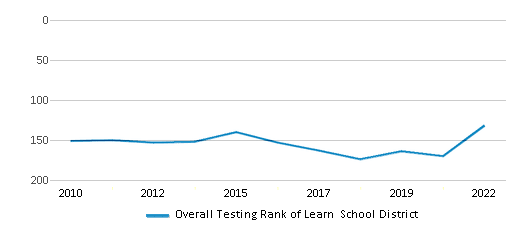
Math Test Scores (% Proficient)
35%
40%

Reading/Language Arts Test Scores (% Proficient)
48%
50%
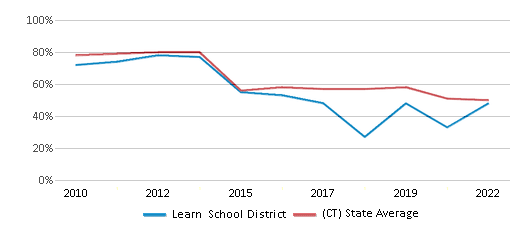
Science Test Scores (% Proficient)
50-54%
47%
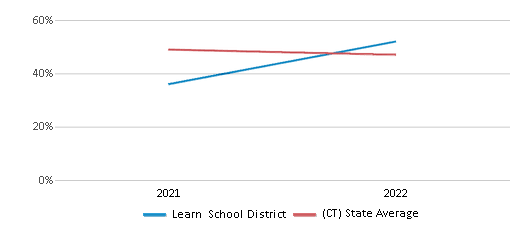
Graduation Rate
≥95%
89%

Students by Ethnicity:
Diversity Score
0.69
0.68
# American Indian Students
3 Students
802 Students
% American Indian Students
n/a
n/a
# Asian Students
36 Students
17,257 Students
% Asian Students
3%
5%
# Hispanic Students
510 Students
103,259 Students
% Hispanic Students
39%
32%
# Black Students
100 Students
41,083 Students
% Black Students
8%
13%
# White Students
483 Students
148,824 Students
% White Students
37%
45%
# Hawaiian Students
n/a
325 Students
% Hawaiian Students
n/a
n/a
# Two or more races Students
172 Students
16,417 Students
% of Two or more races Students
13%
5%
Students by Grade:
# Students in PK Grade:
459
11,754
# Students in K Grade:
82
33,746
# Students in 1st Grade:
82
34,805
# Students in 2nd Grade:
81
36,350
# Students in 3rd Grade:
82
34,358
# Students in 4th Grade:
87
36,068
# Students in 5th Grade:
81
36,193
# Students in 6th Grade:
-
36,541
# Students in 7th Grade:
-
30,995
# Students in 8th Grade:
-
31,244
# Students in 9th Grade:
74
1,668
# Students in 10th Grade:
74
1,606
# Students in 11th Grade:
103
1,382
# Students in 12th Grade:
101
1,334
# Ungraded Students:
-
-
District Revenue and Spending
The revenue/student of $39,201 is higher than the state median of $26,157. The school district revenue/student has grown by 75% over four school years.
The school district's spending/student of $25,562 is higher than the state median of $25,225. The school district spending/student has grown by 75% over four school years.
Total Revenue
$51 MM
$12,920 MM
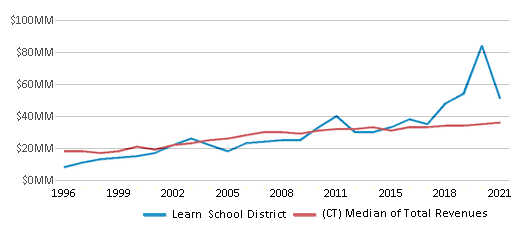
Spending
$33 MM
$12,459 MM
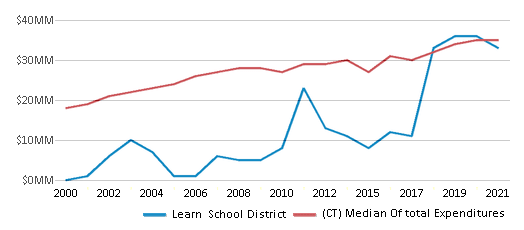
Revenue / Student
$39,201
$26,157
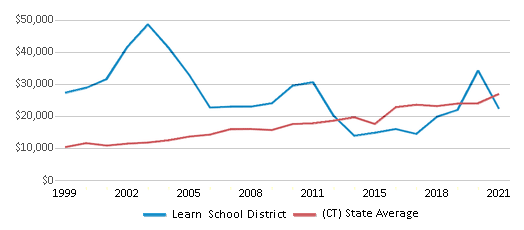
Spending / Student
$25,562
$25,225
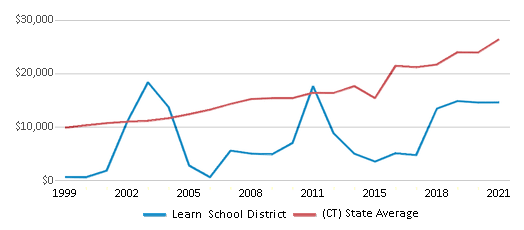
Best Learn School District Public Elementary Schools (2025)
School
(Math and Reading Proficiency)
(Math and Reading Proficiency)
Location
Grades
Students
Rank: #11.
Regional Multicultural Magnet School
Magnet School
(Math: 33% | Reading: 41%)
Rank:
Rank:
4/
Bottom 50%10
1 Bulkeley Place
New London, CT 06320
(860) 437-7775
New London, CT 06320
(860) 437-7775
Grades: K-5
| 495 students
Recent Articles

Year-Round Or Traditional Schedule?
Which is more appropriate for your child? A year-round attendance schedule or traditional schedule? We look at the pros and cons.

Why You Should Encourage Your Child to Join a Sports Team
Participating in team sports has a great many benefits for children, there is no doubt. In this article you will learn what those benefits are.

White Students are Now the Minority in U.S. Public Schools
Increasing birth rates among immigrant families from Asia and Central and South America, combined with lower birth rates among white families, means that for the first time in history, public school students in the United States are majority-minority. This shift in demographics poses difficulties for schools as they work to accommodate children of varying language abilities and socio-economic backgrounds.





